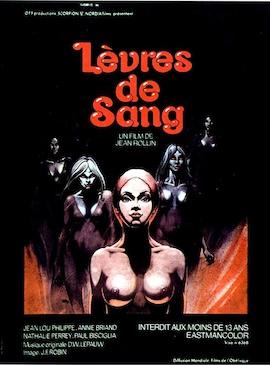Jean Rollin’s vision of vampires was a strange blend of tradition and art film. Having seen his Shiver of the Vampires, I was curious to see what other vampire films he’d done. Lips of Blood is the one I happened upon. (I didn’t see the poster until after watching; hopefully it won’t offend.) In French, it is a Euro-horror from the seventies and it has female vampires who tend to seduce rather than frighten. The unwilling victims, however, do show fear when they realize what is happening. So, a perfumer (I said it was French) is taken by an advertising poster for a new scent at a launch party. He thinks he recognizes the castle in the photograph, but many of his childhood memories have vanished. His mother intends to keep it that way. The powerful impression of the photograph, however, leads him to find the place. He recalls meeting a young woman there who comforted him when he was lost as a boy.

Despite his mother’s efforts, and with some support from the mysterious lady herself, he persists. He finds the name of the chateau on a postcard and immediately heads for it. The woman is still there, but in a coffin. His mother shows up and warns him that she suppressed the memory because the young lady was a vampire. She had killed the boy’s father. His mother and her hirelings failed to kill them and she now asks her son to help. In love with this mystery women, despite her vampire problem, he secretly spares her. The two decide to aim for a deserted island in their coffin, where they can prey on the seamen who will inevitably come ashore in their island paradise. Plenty of lingering shots and images that must be symbolic also appear. When the man visits a cinema, Shiver of the Vampires is playing on the screen.
I’ve been pondering how differently vampires are portrayed in media. I told my wife long ago that vampires and pirates tend to make the best movies. That was a throwaway comment from an otherwise forgotten conversation, but I do think that vampires were made for cinema. If you haven’t explored you might be surprised just how many vampire films there are. They stretch from art house films such as this, where they are beautiful women, to loathsome, pasty creatures that you can barely stand to watch. The middle ground, the aristocratic vampire modeled on Lord Byron, seems to have retained the largest market share. That didn’t stop the renegade director Jean Rollin from suggesting that vampires—fearing dawn, and crosses—might be women forever young, and which, for a French perfumer, might be preferable to the living.
